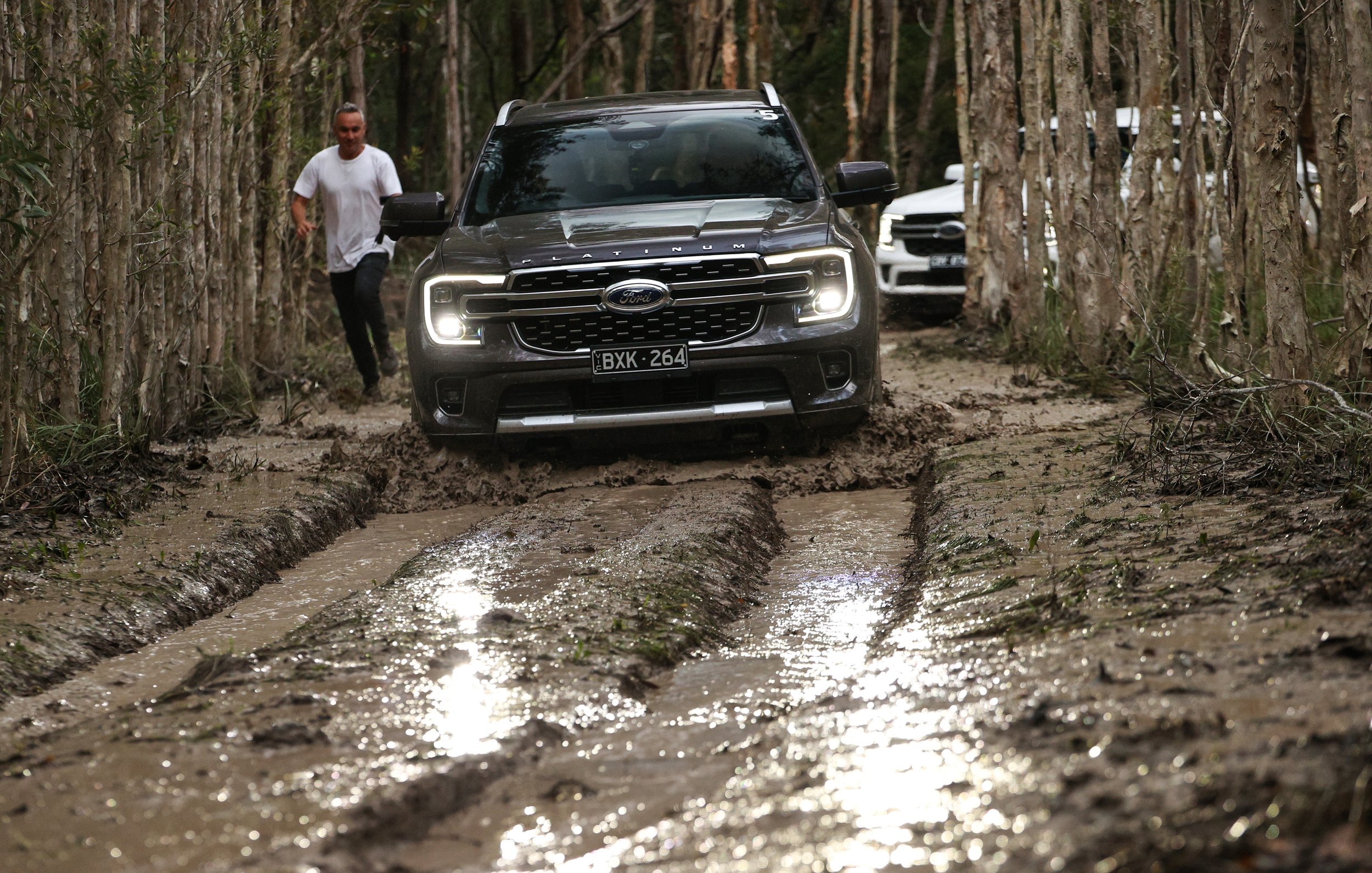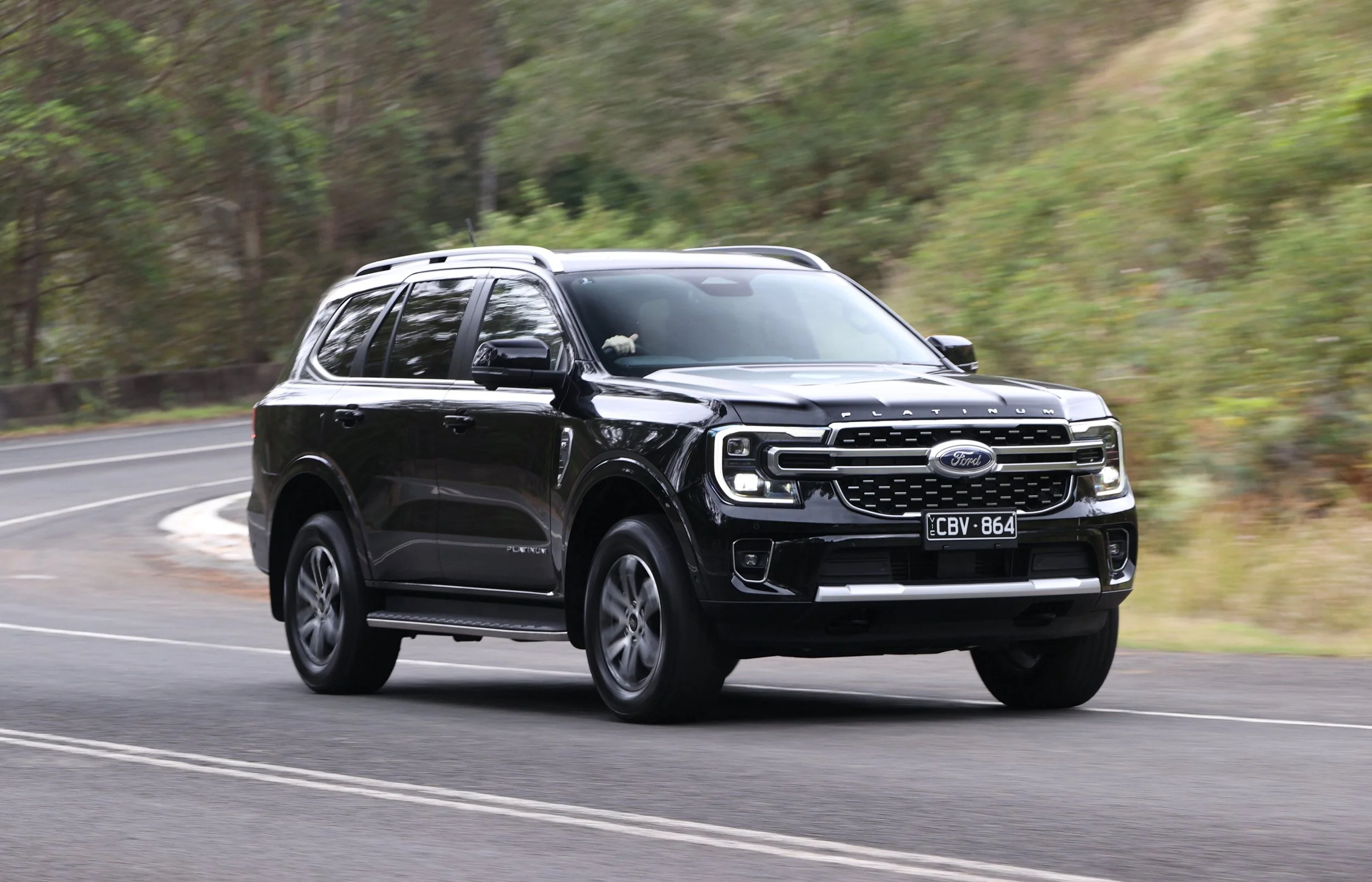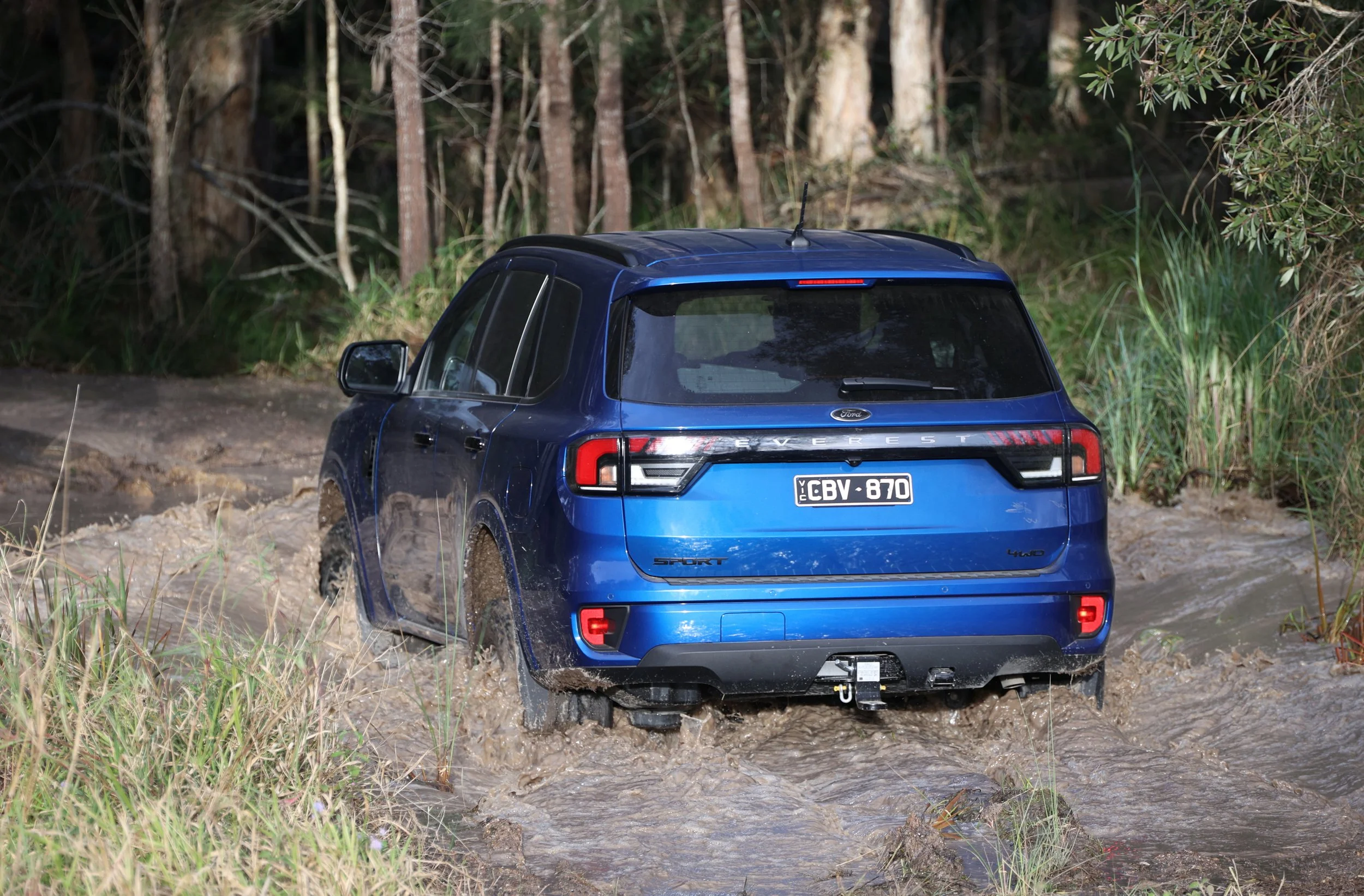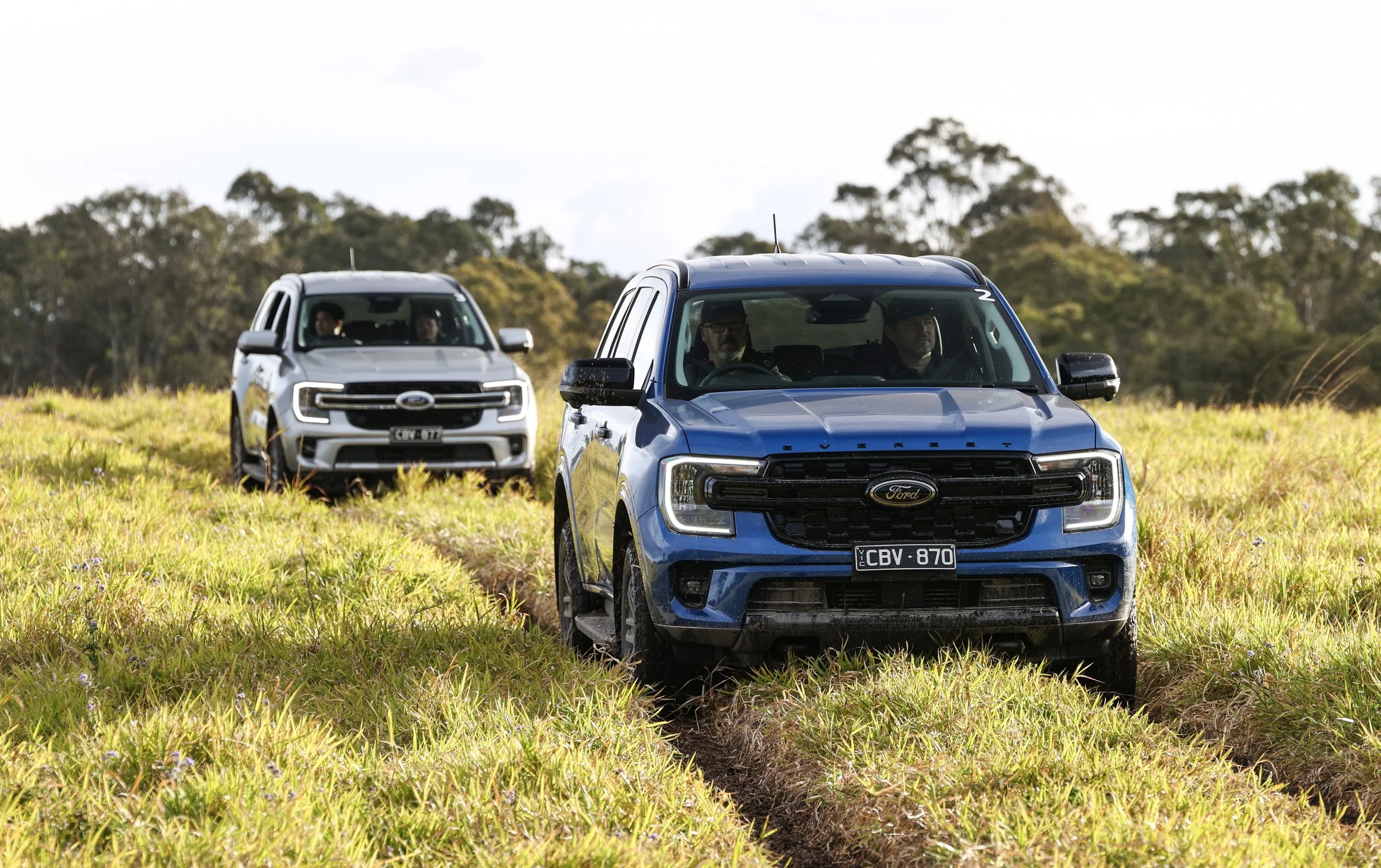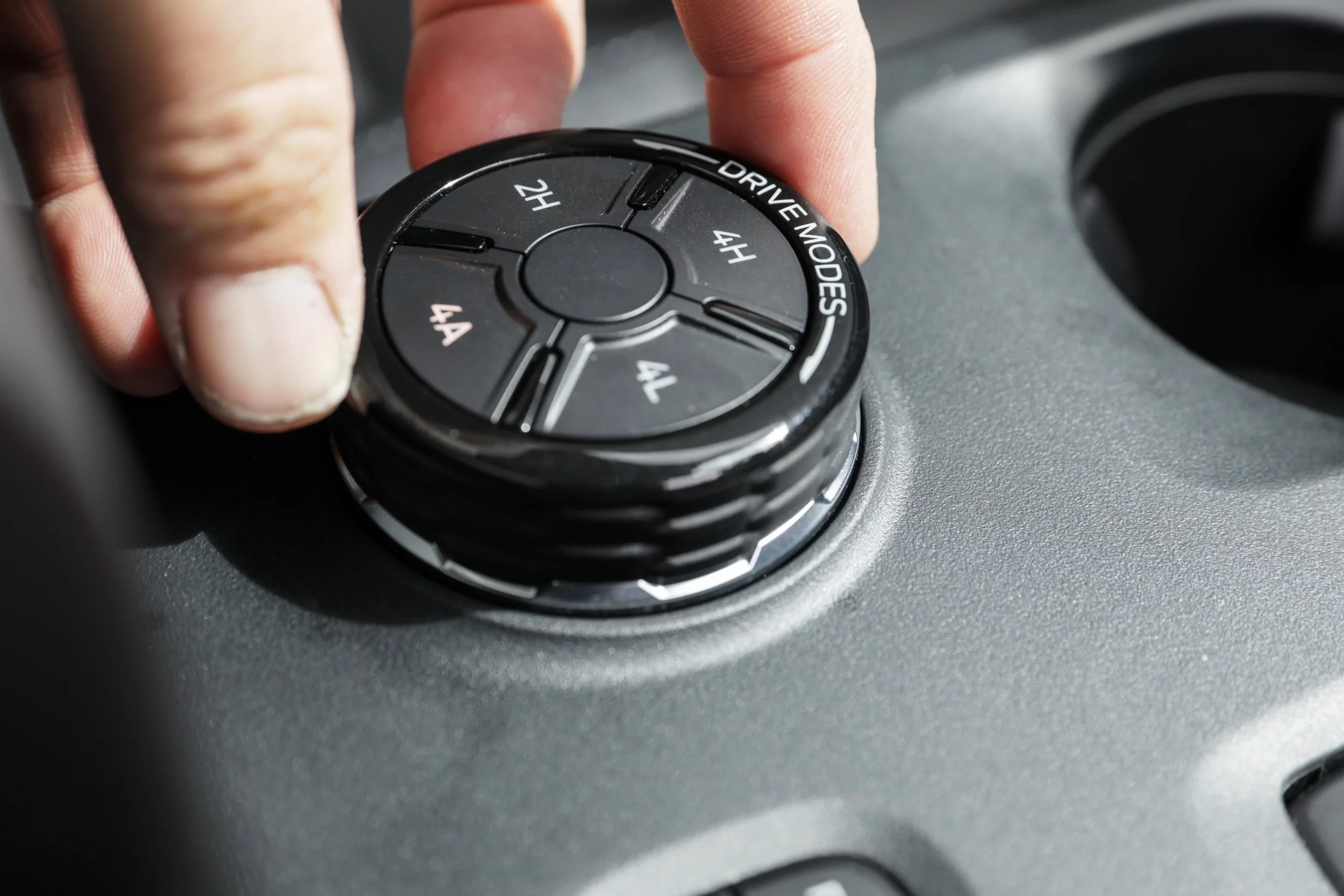Ford Everest first drive review: Peak performer
/All Ranger’s good stuff in a wagon format is no bad thing, really. But despite the extra polish, there’s still no point signing up unless you plan to fully exploit its ruggedness.
CHECK out the sports utility and crossover market and there’s no end of choice – until, that is, you decide that whatever ends up in the driveway has to meet specific criteria, one remit being genuine off-roading ability.
When stuff gets serious; well, there’s not a lot of stuff to truly suit. Zero in on the Ford Everest’s real selling points - seven seats and space inside for the whole family, plus their weekend away stuff, and also truly serious capability away from the tarseal, delivering at a reasonably realistic price - and it’s apparent it is a specialist machine within a pretty small niche.
This model and a handful of others; the primary competitors being from Toyota (Fortuner), Mitsubishi (Pajero Sport), Isuzu (MU-X) and LDV (D90). That’s your lot, really, if you plan on a five figure spend.
Conceivably, each and every one is set to appeal to a pretty specific group of customers because of another common tie. Each and every one relates under the skin to a one-tonne ute.
As was previously the case, the biggest mountain to climb with Everest is the money; although the entry Trend has a slightly slimmed sticker, overall it remains the highest priced of those models. To be fair, it offsets by also being the best-dressed, best-kitted and perhaps most proficient. And, of course, it’s related to a real Kiwi favourite.
Ranger is the traydeck we just cannot get enough of. The old was a huge success and, though the new has only been in the market for barely two months, it has straight away been selling at similar rate as its predecessor. Yes, despite ute tax.
Ranger’s platform, powertrains, technology and safety credentials now apply to Everest. So too some serious off-roading hardware, far more than you’ll find on a streetwise SUV. If all that stuff is so attractive in a Ranger, and you’ve a genuine use for it (meaning, intent to actually do more than swan around suburbia looking staunch) why shouldn’t it be equally so in a wagon?
That question was quickly answered with the media drive giving a heads up about the latest generation ahead of next month’s release here. The event in Queensland offered two specific aspects.
Off-roading was full on. A course in bush outside of Brisbane delivered some of the slimiest, boggiest conditions you can imagine.
What could go wrong when you have all mechanical and electronic gizmos to help you tackle the toughest terrain? A low-range gearbox and locking differentials will be music to the ears of off-road enthusiasts. Just put it into Drive and push on, right?
Well, sort of. Advice was to go slow and steer carefully. Even though many of the vehicles had upgraded to the All-Terrain tyres optional in Australia – but apparently not available here - overnight rain had been heavier than expected and all bets on us getting through without a tow were off.
The Everest showed steadfast agility and grip, utterly nailing a track that – though we didn’t know it at the time – was actually the greater part of a course we’d return next day in the Ranger Raptor, which has even more gear for dirty work.
Long story short, all that schlepping through streams and black ooze glutinous enough to suck a boot from an instructor’s foot (he got it back) and chuntering up and down slick, too-steep-to-stand-on pinches simply enforced that that it’s far more adept at coping with the rough than most.
As you knew it would be. It’s not accurate to suggest that making light work of tough conditions comes more easily to body-on-frame types, such as this, than to unitary body sports utilities. There are vehicles that have reverted to single shell construct (Land Cruiser 300, Land Rover Defender) without losing any other their legendary all-conditions toughness.
However, Everest in previous format had established something of a reputation for being a sensible choice for drivers whose driving regime might require departing the seal and hitting gravel, mud or worse.
If anything, it’s better now. The talents of the new terrain response system are impressive; in mud/ruts mode not even the flagship Platinum’s fancy 21-inch wheels and tyres that seem too large for off-roading was riled.
Greater change comes with the on-road involvement. A programme that had us initially dodging traffic congestion by threading through narrow suburban streets, before breaking out into the countryside and a mix of sinuous hill country roads plus some motorway was a good mix, all in all.
There’s still no disguising that it’s more truck than car, yet a broader wheelbase and widened track has had a settling effect on the dynamics, plus there has been effort to lend more feel to the steering and less grabbiness to the brakes.
Sure, it still demands a measured approach, and limitations of suspension design, sheer weight and kinematics are obvious. Plus, though it is basically the same proportion as the previous, this generation feels bigger.
Yet as much as there are ‘sportier’ SUVs from Europe that would run utter youthful rings around it, it shows sign of also being less ponderous and roly-poly than the few others in its sub-set. Full time four-wheel-drive is an asset for this model, though of course once aspect that comes with the V6 is ability to revert from its ‘4A’ (for ‘four auto’) setting into pure rear drive. Why and in what circumstances you’d find need to is the big question.
The steering is surprisingly sharp and communicative and the ride quality really quite good, there’s less swagger and more assertiveness. What also makes it a better drive than before is the driving position; the front chairs this time around are better-shaped but what really makes it work is the steering wheel finally having height and reach adjustment.
The familiar 2.0-litre biturbo that held the fort after the 3.2-litre five-cylinder retired remains a trouper. It now makes 154kW at 3750rpm and 500Nm at 1750–2000rpm, feels strong and smooth, has okay oomph and remains a sensible choice.
Yet there’s good reason why it restricts to the base $71,990 Trend and why, even though that model now costs a little less than its predecessor and presents with a premium air, it’s going to be struggling to win as much attention as the two other choices.
Regardless that the new 3.0-litre going into the $79,490 Sport and $84,990 tree-topper, previously called Titanium and now designated Platinum, is the major reason why these derivatives hold a $4500 premium over past equivalents, it’ll almost certainly be an easy sell. Sure, a V6 badge is great for boat ramp one-upsmanship. But it’s only fair to say it is genuinely is a better engine for this size of vehicle.
Claimed outputs of 184kW at 3250rpm and 600Nm at 1750–2250rpm seem understated. Surely it’s got more than that? It sure as heck feels it. That bodes well for towing, more a skillset now the optimal braked rating has climbed to 3500kg.
But even without anything hooked behind, you don’t feel it’s going to waste, due to the exceptional refinement. So smooth, so quiet, such surging throttle response. Both diesels cop a CO2 tax, more for the six, but fuel consumption is only marginally greater as it is more relaxed working with the 10-speed auto.
The occupant count on launch never exceeded three adults and travelling in company with some overseas’ media with far more luggage than seemed necessary for four days away meant all luggage spaces were full of bags, with no time to unpack and check out the rearmost seats that fold away when not in use.
Ford has improved third row access the seats by an easy expedient of allowing the second row bench to slide further forward; the back row remains a kids’ hangout. Adults will enjoy rows one and two, however, finding reasonable headroom and decent legroom. Boot space itself is a bit larger, up by 40 litres (so 259 litres all seats up, 898 litres third row folded and 1823 litres with the mid row down) and there’s an underfloor storage area.
The ladder frame construct means whole thing sits high, and though cabin space is generous, the floor is more elevated that in a car-derived SUV, which influences the seating height and angle.
The powerplant’s polish might well have induced the design team to smarten up this steed’s styling.
Obviously, insofar as the external side of things goes, it’s only like a Ranger at the front, where the styling ethos was driven by need to deliver continuity with North America-domiciled equivalents. Everything from the A-pillar back is fresh metal.
Inside the dashboard, instrument cluster, centre console and gear selector are identical to the ute’s. Lower cabin plastics are also similarly utilitarian. This is a vehicle in which you can wear both good shoes or gumboots.
It’s also a model aimed more at families, so while in respect to trim materials and ambience, the more you spend, the flasher it gets (in saying that, the Sport trim appealed more to me than the Trend and Platinum fitouts) the cabin is designed as much for function as flair.
Neat small design touches abound; additional cupholders (that pop out from underneath the air vents) in addition to the two regulation cupholders near the gearshifter, air vents in the roof, space for bottles in the door cards. And so on.
Everest in finest format is quasi-luxury now; a higher quality of soft touch trim across the dash and door tops will be appreciated by Platinum players.
Also transferring from Ranger is that big infotainment screen and fully LCD dash, both portals to a wealth of often interactive tech tech. Depending on the model grade, the portrait infotainment displays are either 10.1 or 12 inches in diameter, but either way the quality of the displays is high.
It’s not the only contender with a touchscreen, but in appearance alone, Ford’s is the standard-setter, while operability is decent, too, with the native systems generally working as adeptly as CarPlay (which hooks in wirelessly), though the navigation’s voice control hasn’t the widest word recognition. It was resistant to tracking down the lunch stop until I said ‘winery’ instead of ‘vineyard.’
Autonomous emergency braking (AEB), low-speed reverse AEB, a front-centre airbag, and curtain airbags that extend to the third-row seats (for a total of nine airbags) include, along with blind-spot monitoring and adaptive cruise control. Rear cross-traffic alert and automatic parking systems are also available, though not at all levels.
The Sport adds heated and ventilated power-adjustable seats for the driver and the passenger. Premium avails heated seats for second row occupants, gets the largest instrument display and has a pretty decent 12-speaker Bang and Olufsen audio system.
FordPass enables remote start, vehicle status check and remote lock and unlock functions via a mobile device. It also allows external control for an exterior zone lighting system which lights up the ground around the vehicle, for safer approaches at night, or for camping. Yeah, tents and stuff. Also, the roof is strengthened to achieve carriers and racks for kayaks, bikes and the like.
Most of the options, in fact, are designed to improve its chances of survival in the wild. It came as no surprise to learn that, to a man, all the high-ups on the development programme seem to spend their weekend heading into Australia’s more inhospitable locations.
Ian Foston, the Ranger/Everest chief platform engineer, is especially famous for it … among his toys is a Land Rover Defender (original), that he’s driven all around the world. He told a brilliant story about how, during a trek through Peru, it was blown off the road high in the Andes by 180kmh winds. How he and his wife survived was down to pure luck; that the vehicle was all but wrecked didn’t deter. He spent the next couple of days rebuilding it with bits and bobs he happened to have packed. Not all were Land Rover parts.
That spirit carried into Everest. The development programme took the test vehicles and these guys into Australia’s most gruelling terrain. They occasionally also trekked with equally can-do owners of the previous model who were just as pioneering and had, in some cases, highly modified their vehicles for some incredible missions. A lot this distilled into the new.
So, as much as this big update delivers more show pony styling and sophistication, that’s stuff almost a side dish; but it’s still, at heart, an adventurer with a workhorse ambience. Fail to use it as such and you’re missing the point and wasting the talent.
As much as Ford has worked to make it a big friendlier for the urban jungle, mainly with a full strength of bump avoidances, from cameras to the usual sensors to overcome the areas of view impended by the metal work - which includes, to small degree, looking over the bonnet, due it now being more bluff (seeing what’s directly ahead of that can be a camera view, ostensibly best employed when cresting summits, but handy in the streetscape, too) - they can only do so much.
It’s a bit compromised, still. The cabin, though more roomy, has neither quite the same comfort nor capaciousness as anything that goes unibody. And then there’s the sheer size. As much as it stands in the shadow of a big land Cruiser, it’s not small. A 50mm increase in track and wheelbase might sound piddling, yet it just feels more substantial than the last. It filled an Aussie carpark, both width and length wise. And, also, it has quite a large turning circle.
This stuff might annoy a bit in suburbia. It won’t matter a jot, though, if your school or shopping run includes some gravel roads and maybe some farm tracks. Or if your weekends are in places where cell phone reception cannot be trusted. As competent as it is in regular driving scenarios - which includes long distance open road travel - there’s sense these are its real happy places.

